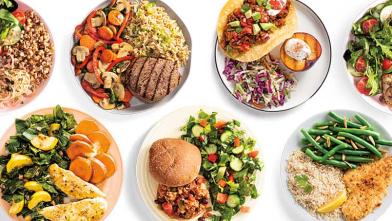
Non-starchy vegetables are an especially large part of an eating plan for people with diabetes because they won’t impact your blood glucose (blood sugar) levels as much as starchy vegetables and fruits. But, what should you do if you are just not a fruit or veggie person?
The answer: Get sneaky!
Instead of going off the rails and returning to old habits, you can find easy ways to enjoy healthy food by sneaking it into the dishes you make. And, if you have kids, it’s a great way to introduce them into healthy eating—even if it’s a little stealthy.
Here are five suggestions for sneaky healthy eating:

1. Make veggies as savory pancakes/latkes. This is a great way to use veggies like zucchini, carrots, beets, or cauliflower. To make these savory pancakes, grate the veggies and mix them into a batter made of grated onion, beaten eggs, baking powder, minced garlic, herbs and spices you like, and several tablespoons of whole grains (like whole wheat flour).
Aim for a moist, but not runny, batter. Heat a pan with a small drizzle of oil and when hot, drop batter into the pan and flatten into pancakes. Cook each side until golden brown and crispy. You can also bake them in the oven—spray a sheet pan with some olive oil, form pancakes, and spritz the top with the oil. Bake until brown and crispy.
Try these Broccoli Onion Latkes. These are a fun way and savory way to do breakfast for dinner!

2. Add greens, like spinach or kale, to your fruit smoothies. And the fruit can be frozen, meaning you can enjoy your favorite strawberries or blueberry flavors even in January. You can also try half an avocado for extra creaminess, but be mindful of the calories and fat. Make this Superfood Smoothie to try it out.
3. Add more veggies to your marinara and other tomato-based sauces. Add grated carrots, roasted eggplant and red peppers, diced squash, or chopped greens as you cook your sauce. Leave as-is, or try blending the sauce with the added veggies for an even texture that will disguise the veggies even more.
4. Sneak veggies into your meat-based meals. Make a veggie-filled meatloaf with ground turkey or chicken and add diced mushrooms, grated carrots, and/or summer squash. Not only will you get more nutrients, but the meatloaf will also be moister. This trick also works great with burgers and meatballs. Similarly, add finely diced red bell peppers, summer squash, fennel, or broccoli to your salmon or fish cakes.

5. Try roasting vegetables you don’t normally like. A spritz of olive oil and a hot oven will caramelize the produce and transform their flavors into something new that you may love. Plus, you can add roasted produce to sauces or pasta or a whole grain bowl like this Mediterranean Grain Bowl.
Want more ways to get fruits and veggies into your diet? Sign up for the Diabetes Food Hub e-newsletter for recipes delivered straight to your inbox every month!














